
Because of this, there are a lot of exciting things happening in the world of mobile. Technological advancements are continuing apace, and the network of connections between us is growing stronger and more advanced all the time.
Smart devices are making our interaction with technology more sophisticated, subtle, and efficient. Soon the devices themselves will become such a part of everyday life that we won't even think about them, they'll just quietly do their job, just as electricity does now.
But until that time, here's a quick top 9 of the mobile developments that we're excited about here at blur.
Qi Charging
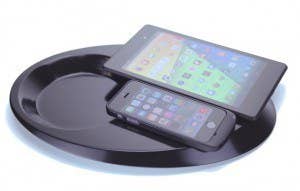
Qi Wireless Charging, a standard created by the Wireless Power Consortium, looks set to become the future of mobile device charging. With more and more mobile devices coming with wireless charging capabilities, either built in or as part of a custom-made case, you'll be seeing a lot more of these stations in the near future.
Supported by Google on their newest mobile phones and phablets (hmm…not sure about that term yet) wireless Qi charging has the ability to change both the availability and universality of mobile charging interfaces, meaning you can forget about wasteful adaptors that get superseded every few years, creating drawers full of old cables in every home.
The range is admittedly limited at present to around 30mm distance, but this will no doubt quickly improve, meaning you can have your mobile device anywhere on your desk, or even anywhere in the room, and it will be charging. Once it becomes ubiquitous, it will change the way devices are designed; they can have smaller batteries or save space by not needing the power port at all.
Foldable Tablet
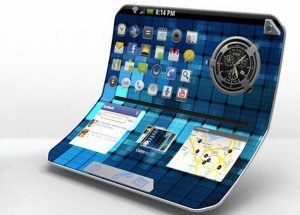
A new report by Daum states that Samsung is aiming for a commercial launch of a folding tablet in early 2015. The tablet will be able to be folded twice, and will boast a full HD OLED screen of around 8-9 inches.
I guess the advantage of having a tablet that folds is that you can carry it around like a wallet, book, or purse, perhaps even fitting it in your jacket pocket or handbag, and then whip it out for some serious mobile interfacing at your favourite bus stop / coffee shop / wine bar and wow your senses and your friends with the amazing large display and folding loveliness.
Although this is another step towards ever more lifestyle accommodating hardware, I'm not 100% convinced that people are going to get all over this concept. Until we see it in the flesh, I'm not sure whether people will accept the inevitable loss of uninterrupted screen clarity (when watching video for example) that will be needed to create the folds. Watch this space.
Mobile Virtual Reality
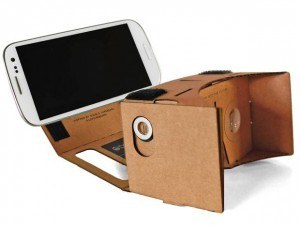
Despite virtual reality talk being predominantly based around the now Facebook-owned Oculus Rift project, Virtual Reality is not only a PC based experience.
From the DodoCase VR that turns your mobile phone into a cardboard VR headset for only $20 (pictured above), to the advanced VR peripherals being worked on by Samsung and Oculus themselves, the VR world is about to get seriously mobile.
Oculus have been working on a mobile development kit for a while now. With legendary Doom co-creator and game designer John Carmack at the helm as Chief Technology Officer, I for one am looking forward to the result. Promising to be compatible with high end Android devices initially (Android being more open to peripherals than the iOS system) and to provide more than a basic version of the main Oculus Rift experience, it'll need some serious development. Virtual Reality requires a fair whack of computing power. Oculus need to make sure that a watered down experience doesn't tarnish the reputation of the main VR experience, and put people off at an early stage.
But I can't help but get pretty excited at the idea of a mobile VR experience, that you can potentially take anywhere, and also involve anyone else on the network. What future concepts will this enable, for example around virtual multiplayer gaming in a real physical environment, augmented by VR software? Or totally immersive educational environments that you can literally walk around in, like your own personal holodeck. Exciting times.
Project Ara – modular phone
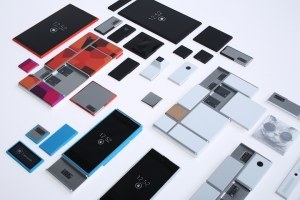
For a truly innovative reframing of a familiar concept, Google's Project Ara takes some beating. Project Ara is the name of an initiative to develop a free, open hardware platform for creating modular smartphones.
Basically, the idea is that the lifetime of your mobile phone can be increased, and wastage reduced (think of the mountains of old cellphones that are piling up across the world) by creating a structural frame that can hold different smartphone modules of your choice, that you can replace is they malfunction, or upgrade as new innovations are developed.
The frame, or endoskeleton is called, fittingly, an 'Endo'. This will be the only component actually made by Google themselves. Making the platform open hardware means that many different designers can create official or unofficial modules and addons for the phone, and these can be swapped as and when required, creating a huge range (google states there could be "hundreds of thousands of developers", similar to the Android app market) and competitive environment.
With a starter kit of a frame, display, battery, basic CPU and WiFi starting at around $50, Google says it is designed to be used by "six billion people". A frame on its own is expected to cost around $15.
Once Google can iron out the slight issues around the extra size, weight and regulatory approval that its modular, open marketing concept creates, this could genuinely become the future of mobile technology, and help reduce the wastage associated with mobile phone advancement.
EStar Holographic Smartphone

There are a range of 3D smartphones being developed around the world at the moment, but one of the more interesting one is the Takee, coming from China. Using four front facing camera to track the eye movements of the user, it creates 3D pictures that appear to the eye as a 3D hologram.
Despite this sounding extremely similar to the Amazon Fire Phone's capabilities, the video promo for the EStar seems to show the images actually being projected right off the screen of the phone, something that Amazon does not do. Admittedly, this capability does sound a bit unlikely, as the EStar appears to use the same technology as the Amazon, but it all looks very exciting.
Takee also boasts that the phone can be controlled by hand gestures, and can record 3D images from its twin cameras on the rear, that can be printed out using a 3D printer.
It remains to be seen how many 3D printed selfie busts will litter people's homes thanks to the EStar.
Advanced Mobile UX Design
Smartphones currently convert at less than a third of the rate of all other devices currently available but in the very near future all this will change. Advanced UX design will be key to the dramatic increase of sales made on mobile devices and in addition, 'Internet of Things' means that new types of interactions on many screen sizes will change the way people purchase.
Advanced UX design will extend to these new devices and responsive will no longer be the main solution to handle multi-device interactions. No matter how the device is used; e.g. in your hand or resting on your lap, the way that the user manipulates the user interface will feel incredibly natural all the time.
Cues to let the user intuitively know what is happening will become extremely advanced and increasingly sensory, such as visual, auditory and even tactile will be utilized. Animation will also be more and more popular. Sound or vibration will be used to alert the user that something has gone wrong just as it is used to let the user know what has been processed correctly. Dry, techie language will also fall by the wayside (thank God) and users will see familiar language that's concise and easy to understand.
This all adds up to a more accessible, intuitive and interactive experience for the future mobile customer.
Wearable Devices

(PC World)
"Taping a cellphone to your wrist is not what I'd call a wearable. There has to be a reason why you'd use the technology," said Mike Bell, Intel's General Manager of new devices, speaking at the Web Summit conference in Dublin this Wednesday.
Now that Apple have announced the Apple Watch, the Smartwatch will likely take off in a big way. Rather than it being an idea that no developer was brave enough to gamble on, the power of Apple's endorsement and innovative design may well forge a path that will see the smartwatch becoming the next big wearable technology. But it has to be intelligently designed, and deployed, with a clear purpose and function.
The Pebble Steel Smart Watch is a great example of design and development working hand in hand to create something that really connects with customers. it'll work with any smartphone, is light, looks good,and thanks to its Kickstarter origins, is truly customer focused.
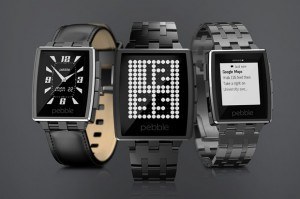
Google Glass, despite its initial problems, will create a new, highly personalized mobile environment, which when combined with other wearables and incorporating precise location detecting, will create a personal network of services, experiences, content and interaction. Be prepared.
One I like that is a more basic, yet very popular wearable is the Qihoo 360 Kids Guard 2. This wrist worn device that allows parents to track their kids on their mobile phones has already sold over half a million units. It can alert when your child moves outside a pre-determined range, and even activate a microphone on the device for you to be able to listen and try to find out where your child might have wandered off to. Very handy, although not an excuse to experiment.
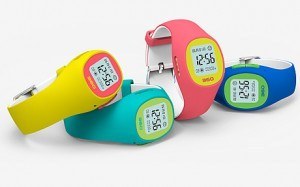
As well as the smart watch and glasses, there are other wearables being developed that are designed to strengthen connections, both in a social and business sense.
The Onyx is small button with a speaker that clips to clothing and connects via Bluetooth to a smartphone with a data connection.
Pressing the button connects directly to other Onyx units in a pre-defined group allowing hands-free real-time communication anywhere with an internet connection, either via a built-in speaker or a pair of headphones.
Jesse Robbins, chief executive and founder of OnBeep, said in a blog post that Onyx would "enhance the way people communicate, delivering effortless, group collaboration, using the power of your voice".
As more and more mobile technology developers embrace wearable, a multitude of devices will be tethered to first your mobile phone, then the network itself, meaning that wherever you go, you're connected – either to each other, or to the wider network. That idea will either excite, or profoundly disturb.
High Precision Location Sensing
OK, so Apple, Google and Facebook pretty much already know where you are at any given time, but this will take location monitoring to a far more precise level, and make it much more personally functionable.
The idea is that multiple smart sensors will interact with your mobile apps to monitor precisely your movements within homes, buildings, streets etc to enable a new generation of highly personalized environments, lighting, messaging, services and information.
Scary? Perhaps…but the potential for a personalized little bubble of experiences and environments through smart networking that responds in real time to your behaviour, all connected through your smartphone or wearable technology, will herald a new age of human/computer interfacing, bringing comfort, and entertainment. And probably a whole lot of marketing.
Google Fit
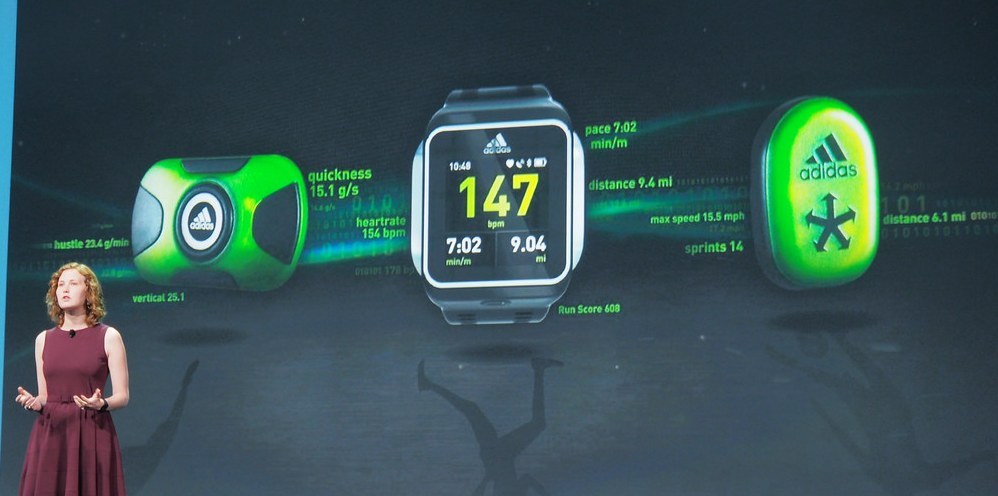
Google Fit has the potential to revolutionize the way we record, monitor and improve our fitness through mobile technology.
It tracks all of your 'health metrics' – sleep, steps, activity, etc, and it's available on the Play Store for free. According to their site, Google Fit is an open platform that lets users control their fitness data. It lets developers build smarter apps and manufacturers focus on creating amazing devices.
Basically it means all your health data ends up in one place, making it easier to monitor, and easier for health device developers to access your information. It's supported by some big names – Nike, Adidas, Runkeeper and others. The Nike Fuelband is one example of a wearable working in conjunction with the Google Fit initiative.
Despite it being more of a platform than an app, it means that all devices could technically work with all fitness software, making the entire health and fitness mobile interface concept more open, accessible, and efficient. And its a clever move from Google, once again making it as easy as possible for device manufacturers to be able to to interface with Android.
Making it easier to track your activity and improve your fitness is a noble goal on the surface. Despite the slightly unnerving ability to accurately monitor human movement and behaviour again, if it makes me get away from my desk a bit more…it may well be a good thing.
For 4 out of 10 people their mobile is now the first thing they look at in the morning, and it's the last thing they look at before they go to sleep. As mobile continues to take over our professional and personal lives, this trend will no doubt increase. Mobile technology is the future of human and computer interfacing, and businesses need to be at the forefront of these developments.
For more information, visit blur Group website: www.blurgroup.com

